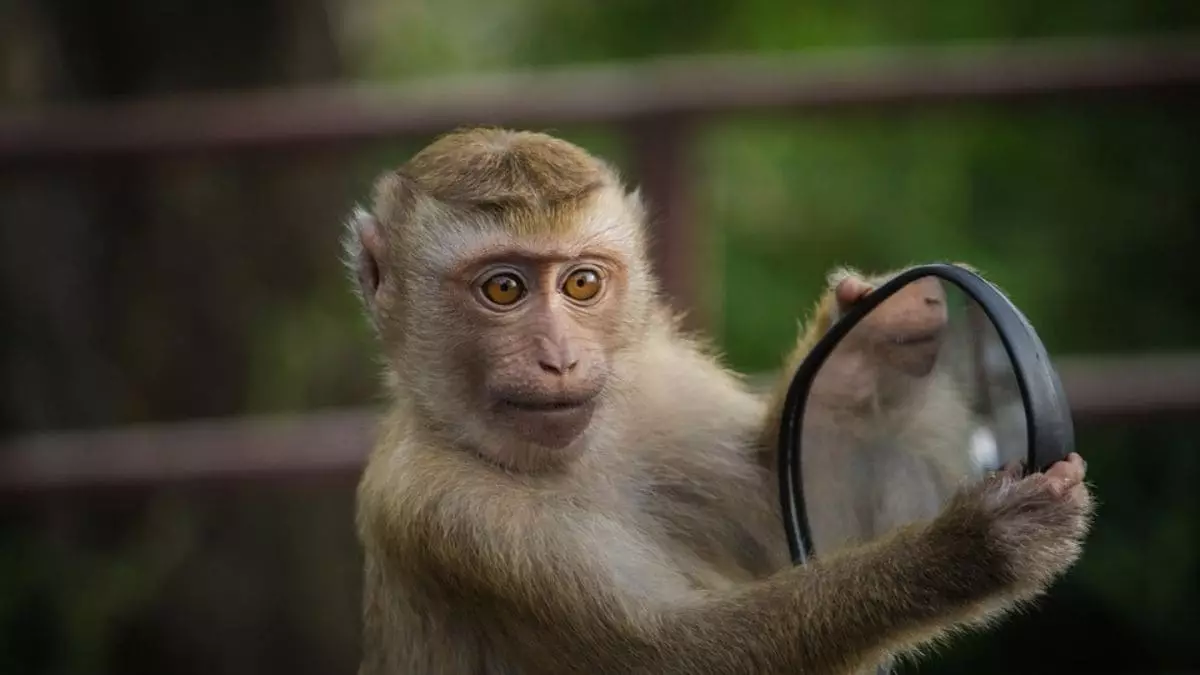Throughout various studies in animal behavior, the ability of species to recognize themselves in mirrors has long served as an intriguing indicator of self-awareness. While some animals, like dolphins and apes, demonstrate this capacity, recent research on chacma baboons in Namibia has unveiled a striking contrast. Despite consistent engagement with their reflections, these primates exhibit a lack of self-recognition, raising fundamental questions regarding the nature of self-awareness and its evolutionary significance.
Conducted over five months in Namibia’s Tsaobis Nature Park, the study involved the strategic placement of large mirrors near vital water sources utilized by two troops of chacma baboons (Papio ursinus). Researchers meticulously designed experiments that included projecting laser dots on the baboons’ bodies while they interacted with their reflections. The primary objective was to ascertain the connection between the baboons’ reflections and their physical selves. Despite the expected responses—touching marks on visible body parts—only a small fraction showed any awareness when the dot was on their face.
The most noteworthy outcome indicated that a staggering 64% of 91 baboons responded to the laser dot when it was positioned on their arms or legs. This observational finding contrasts sharply with the mere one out of 51 baboons who acknowledged a mark on their face or ear while gazing into the mirror. This stark discrepancy in behavior raises significant questions about the cognitive processes underlying self-recognition among different species. While the baboons demonstrated curiosity towards the mirrors, their limited response to facial markings suggests a broader theme of self-awareness inadequately developing in non-ape primates.
Alecia Carter, an evolutionary anthropologist at University College London, articulated the complexity inherent in defining self-awareness among animals. Traditional methods, such as the mark test, have endowed us with insights into the self-recognition abilities of select species. However, the baboons’ unresponsive behavior elucidates that self-awareness might not necessarily be uniform across different taxa. The study indicates that cognitive abilities are not solely contingent on observed behaviors, suggesting a nuanced understanding of self-awareness as a gradient rather than a binary classification.
In an intriguing juxtaposition, primatologist James Anderson of Kyoto University reflects that the findings bolster prior research indicating non-ape primates struggle with mirror recognition. In contrast, trained rhesus monkeys in laboratory settings have demonstrated self-exploratory behaviors using mirrors. It raises the possibility that environmental contexts play a pivotal role in shaping learning strategies for self-recognition among animals. Masanori Kohda, also noted for his insights into animal sociology, postulates that if the baboons did not perceive the stationary laser dot as part of their bodies, their reflections might remain a puzzling entity rather than a self-identifier.
Furthering this conversation, psychologist Lindsay Murray from the University of Chester proposes that self-awareness is not a straightforward trait but a continuum. Just as not all humans can recognize themselves in mirrors at a young age—65% of toddlers successfully pass the mirror test by age two—other animals may possess different degrees of self-awareness influenced by their developmental stages and ecological demands.
Carter’s assertions suggest that self-awareness might not be critical for survival among certain species, such as baboons, who manage to thrive without recognizing their reflections. This notion broadens the discourse from merely cataloging species’ cognitive competencies to understanding the evolutionary implications of such traits in the wild.
The study of baboons and their reflections sheds light on the complexities of self-awareness across animal species. While the baboons displayed a lack of mirror recognition, their behavior opens pathways for further inquiry into the cognitive capacities and evolutionary adaptations of primates. As research continues to explore such dimensions, the understanding of self-awareness in the animal kingdom remains an ever-evolving pursuit, inviting deeper consideration of what it means to be self-aware.


Leave a Reply